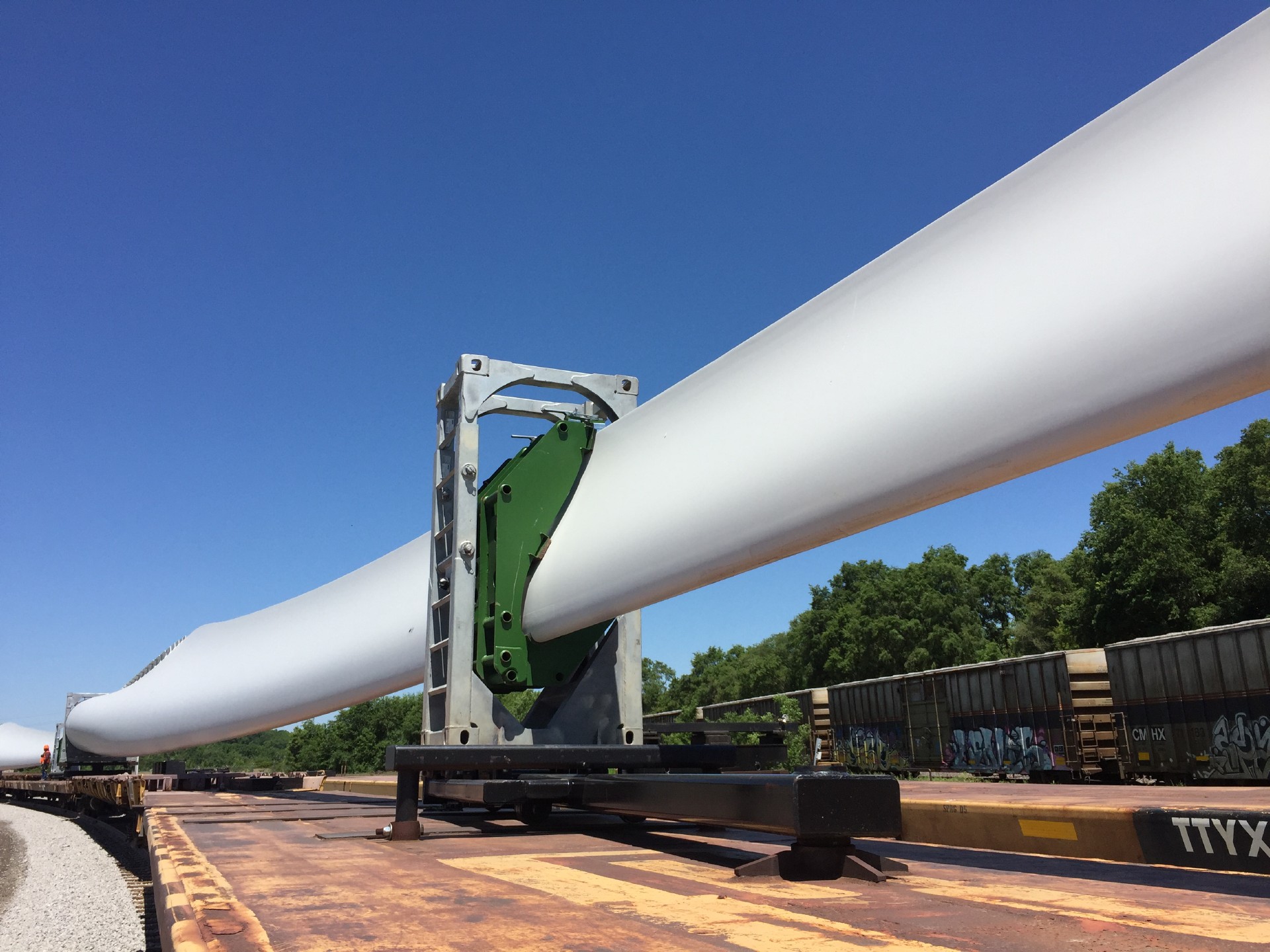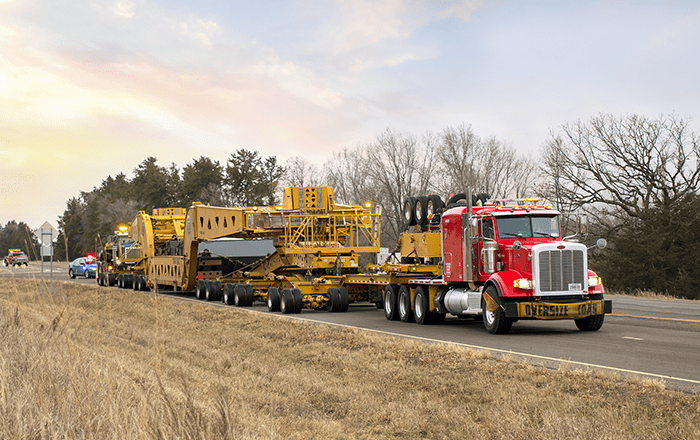Oversize loads require safety precautions and expertise, so you need to be careful about what oversize freight carriers you use for these types of jobs. Make sure you do your research beforehand and choose abnormal load transport companies you trust in order to avoid any problems during shipping.
Here’s everything you need to know about oversize load freight shipping to help you make the right decision.
What Is a Dimensional Load?

Wind turbine blades and components are perfect examples of dimensional loads
When freight (i.e., a “load”) is larger or heavier than a typical shipment it’s referred to as a “dimensional load.” That’s because the “dimensions” put them in a special shipping category. In general, dimensional loads:
- Are wider than 11 feet
- Are taller than 17 feet above the top of the track
- Extend past the end of the rail car
- Weigh more than 220,000 pounds (110 tons)
Because dimensional loads are often determined by their size, they are also referred to as “high-wide shipments.”
Why Are Dimensional Loads in Their Own Category?
Trains are ideal for shipping large volumes of heavy freight. So what makes dimensional loads different? When freight shipments are taller, wider or heavier than a typical shipment, it may require special accommodations like:
- Customized loading or securement
- Additional handling and/or crews
- Special routing and railroad clearance



